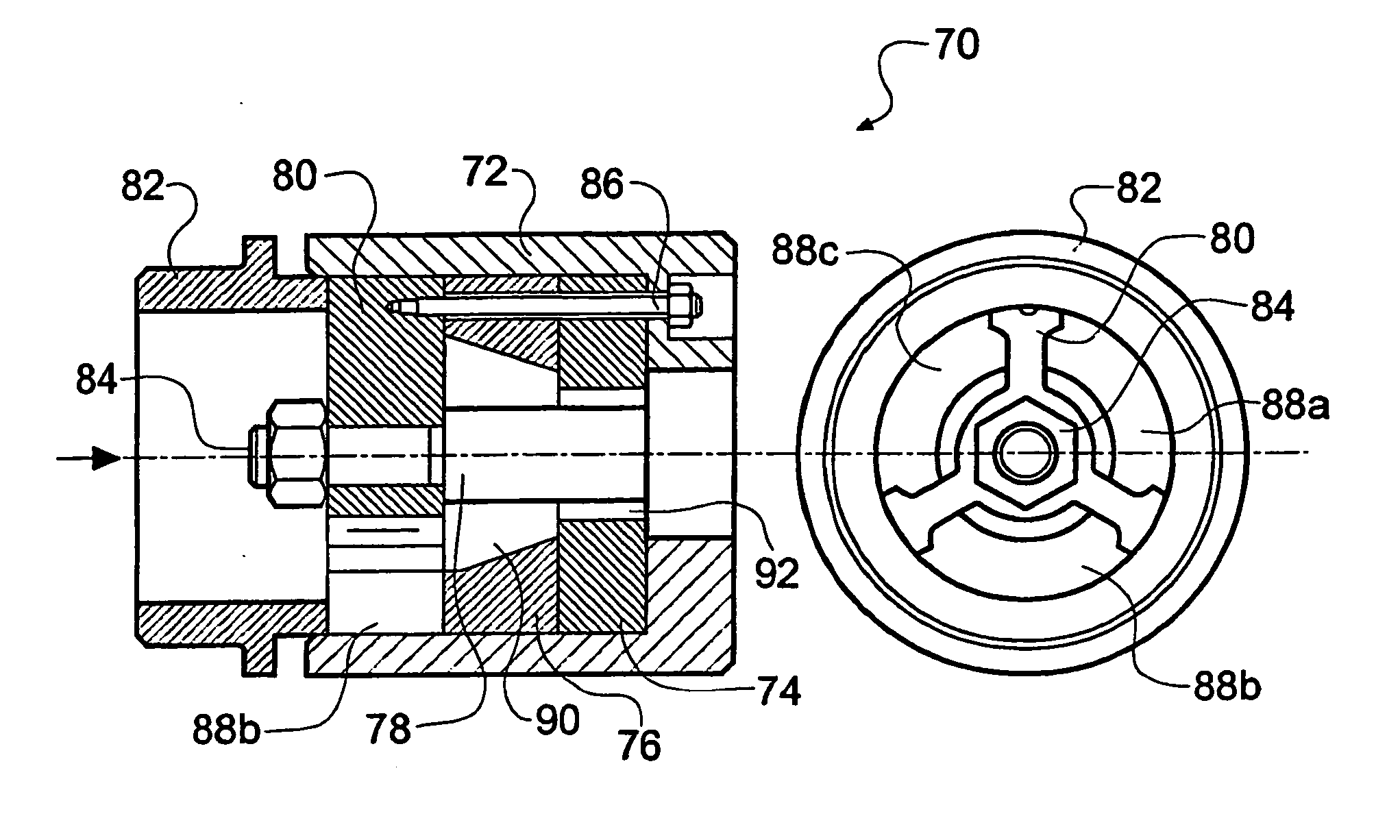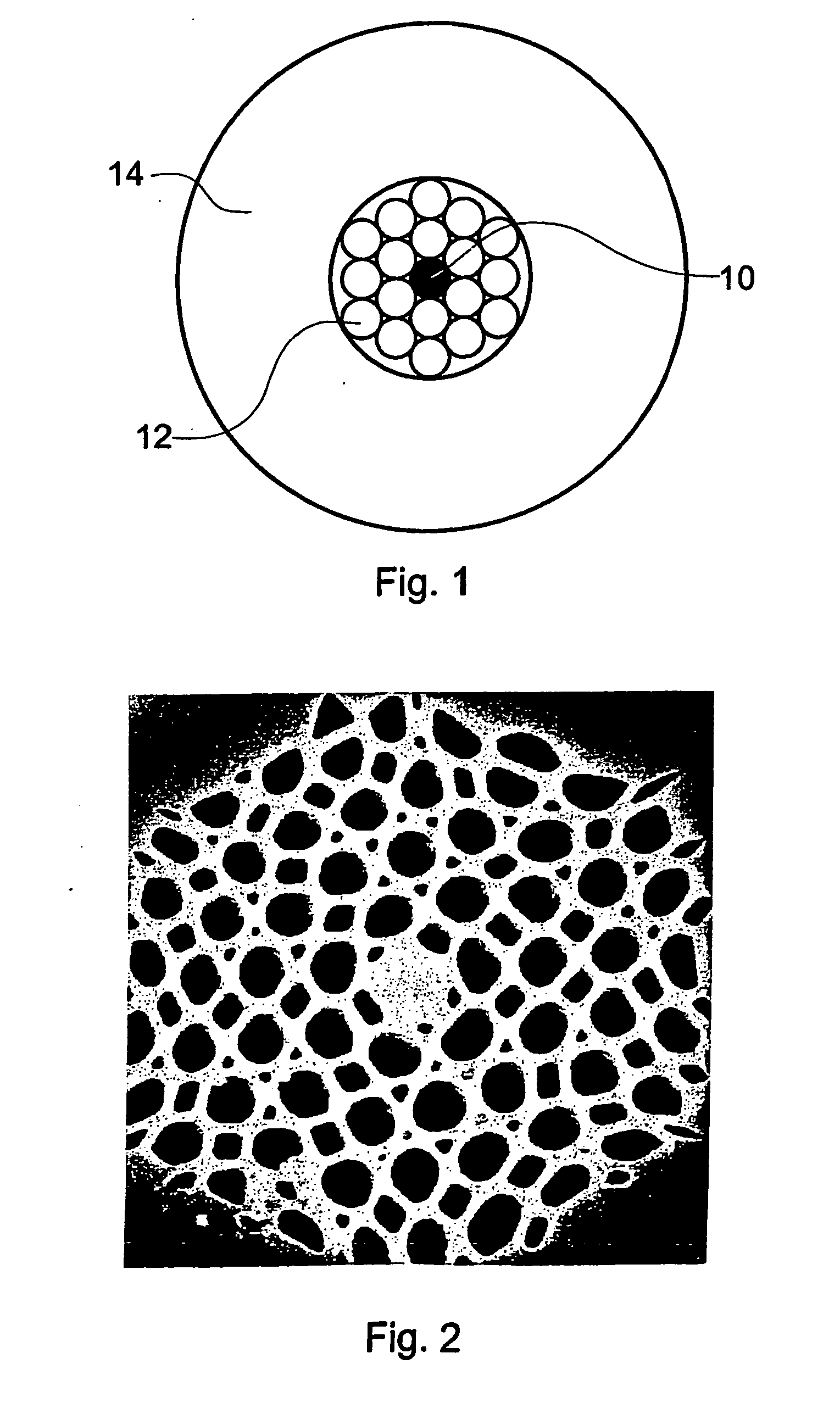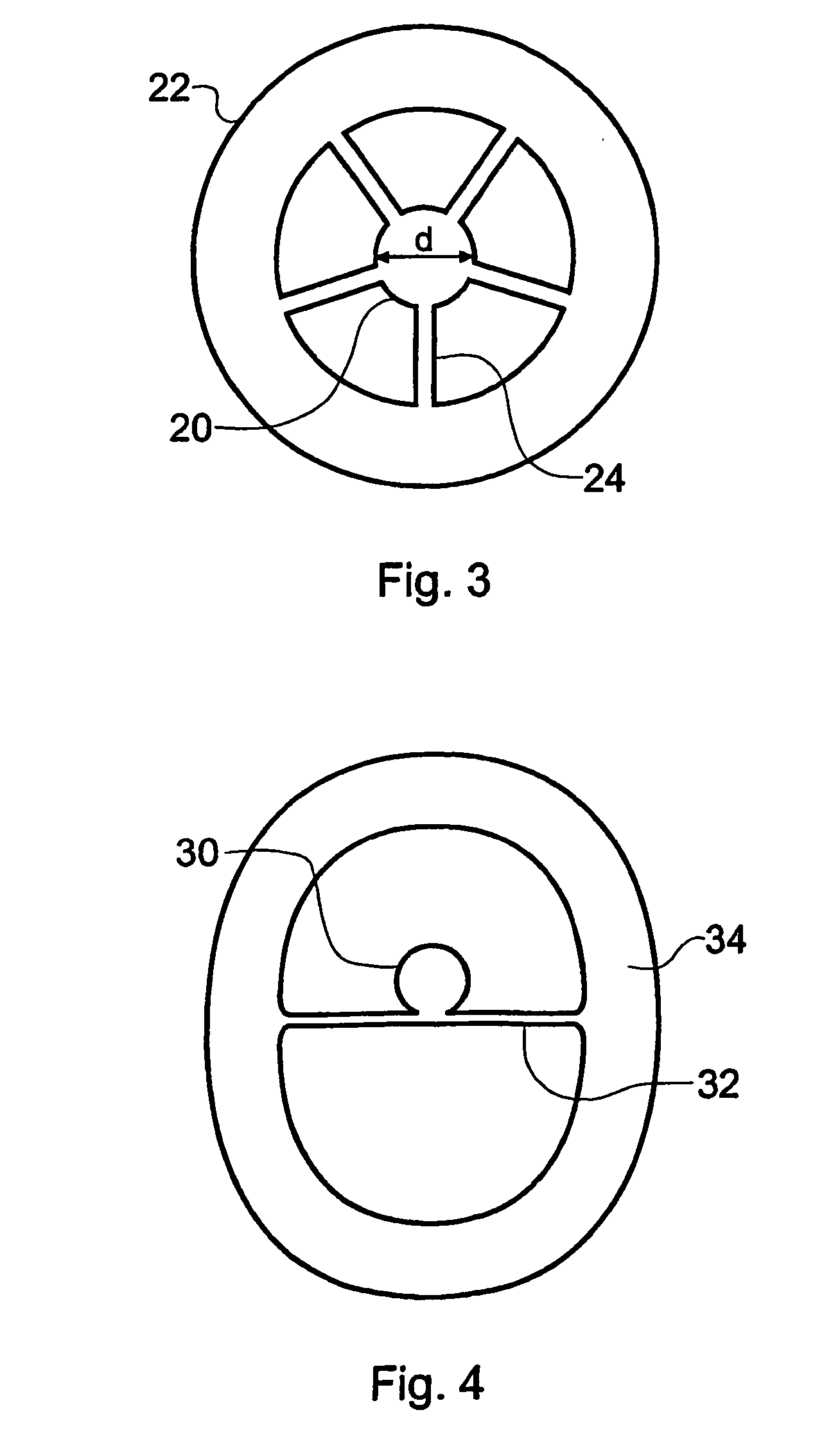Fabrication of microstructured optical fibre
a technology of optical fibre and microstructure, applied in the field of optical fibre, can solve the problems that the above-specified requirements cannot be met satisfactorily, and achieve the effect of smooth material feed
- Summary
- Abstract
- Description
- Claims
- Application Information
AI Technical Summary
Benefits of technology
Problems solved by technology
Method used
Image
Examples
first embodiment
[0145]FIG. 15a is a photograph showing an extruded cane preform 160 which has been fabricated using an extruder die 100 according to the first embodiment of the invention described above.
[0146] The cane preform 160 is made from SF57 glass, a commercially available Schott glass. The high lead concentration of this glass leads to a high refractive index of 1.83 at 633 nm and 1.80 at 1.53 μm with losses in the bulk glass of 0.7 dB / m at 633 nm and 0.3 dB / m at 1.53 μm. The non-linear refractive index (n2) measured at 1.06 μm is 4.110−19 W2 / m [4], more than an order of magnitude larger than that of pure silica glass fibres [5]. Since the effective non-linearity of a fibre is γ=n2 / Aeff, where Aeff is the effective mode area. The combination of this glass with the small effective areas (Aeff) possible in micro-structured fibres allows for dramatic improvements in the non-linearity that can be achieved.
[0147] SF57 glass has a low softening temperature (519° C.). The cane preform 160 was ex...
second embodiment
[0159]FIG. 17a schematically shows in vertical section an extruder die 200 for use in manufacturing an optical fibre preform according to a second embodiment of the invention. This particular embodiment is designed to produce a cane preform with greater cross-sectional outer wall thicknesses. In this example, the extruder die 200 is again manufactured from stainless steel grade 303, and is polished to reduce friction. The die 200 comprises an inner die part 202 and an outer die part 204 which together define a welding chamber 206 which is in fluid communication with an opening to the lower face of the extruder die 200.
[0160]FIG. 17b schematically shows in vertical section the outer die part 204. In this example, the outer die part 204 is cylindrically symmetric. The external profile consists of a tapered cone 208 ending in a parallel diameter 210. The inner profile consists of a parallel bore 212 of suitable diameter to mate with the inner die part 202 and which terminates in a tap...
third embodiment
[0165]FIG. 18a schematically shows in vertical section an extruder die 800 for use in manufacturing an optical fibre preform according to a third embodiment of the invention. This particular embodiment is designed to produce a cane preform in which the central core is hollow. In this example, the extruder die 800 is again manufactured from stainless steel grade 303, and is polished to reduce friction. The die 800 comprises an inner die part 802 and an outer die part 804 which together define a welding chamber 806 which is in fluid communication with an opening to the lower face of the extruder die. The extruder die 800 further comprises a spider disc 805 and a mandrel 803.
[0166]FIG. 18b schematically shows in vertical section the outer die part 804. In this example, the outer die part 804 is cylindrically symmetric. The external profile consists of a tapered cone 808 ending in a parallel diameter 810. The inner profile consists of a parallel bore 812 of suitable diameter to mate wi...
PUM
| Property | Measurement | Unit |
|---|---|---|
| Length | aaaaa | aaaaa |
| Length | aaaaa | aaaaa |
| Length | aaaaa | aaaaa |
Abstract
Description
Claims
Application Information
 Login to View More
Login to View More - R&D
- Intellectual Property
- Life Sciences
- Materials
- Tech Scout
- Unparalleled Data Quality
- Higher Quality Content
- 60% Fewer Hallucinations
Browse by: Latest US Patents, China's latest patents, Technical Efficacy Thesaurus, Application Domain, Technology Topic, Popular Technical Reports.
© 2025 PatSnap. All rights reserved.Legal|Privacy policy|Modern Slavery Act Transparency Statement|Sitemap|About US| Contact US: help@patsnap.com



